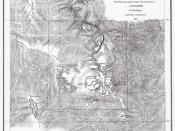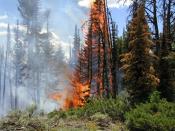Species endangerment has been, and still is, a growing concern in our rapidly developing nation. As skyscrapers rise, forests and other precious habitats disappear. Appreciation begins with knowledge and it is past due that we begin to appreciate what was here before us. In David S. Wilcove's book The Condor's Shadow, he delves deeper into the roots, concerns and consequences of human interaction with natural habitats and their inhabitants.
Although, the US is large in its capacity to harbor many species, it is easy to find the correlation between two distinct areas in the United States. Wilcove devotes one chapter in his novel to Hawaii and another to the Western part of the United States--we can conclude that these are two completely different environments, but when it all boils down, and we begin to look at three main ideas: the lost of habitat in Hawaii (For example: destruction of the island refuge and vacant niches (a secluded, sheltered place in which different species may occupy) and in the United States' Western area (For example: Vast open land that was later populated by cattle and ranches), species endangerment, more specifically the po'ouli (a native bird of Hawaii) and the gray wolf (a species of wolf that populated Yellowstone Park) and the root of the cause--human disturbance (mindless slaughter of animals for personal gain, over development of civilization in natural habitats), most people find the two environments strangely similar to one another.
An island pure in all its abundance of natural habitats and clear blue waters, Hawaii gives off the impression that it is a sanctuary for beautiful flora and fauna, and that it is. Hawaii is a wonderful island refuge for animals such as birds, turtles, fishes, bats, seals (particularly the Hawaii monk seal) and a wide array of insects.



Duplicate submission
Thank you for a good essay on species endangerment. Our delicate ecosystem is interrelated to such an extent that the disappearance of any species could upset the delicate balance. Great work! Of course, it's only necessary to submit your essay once.
4 out of 4 people found this comment useful.